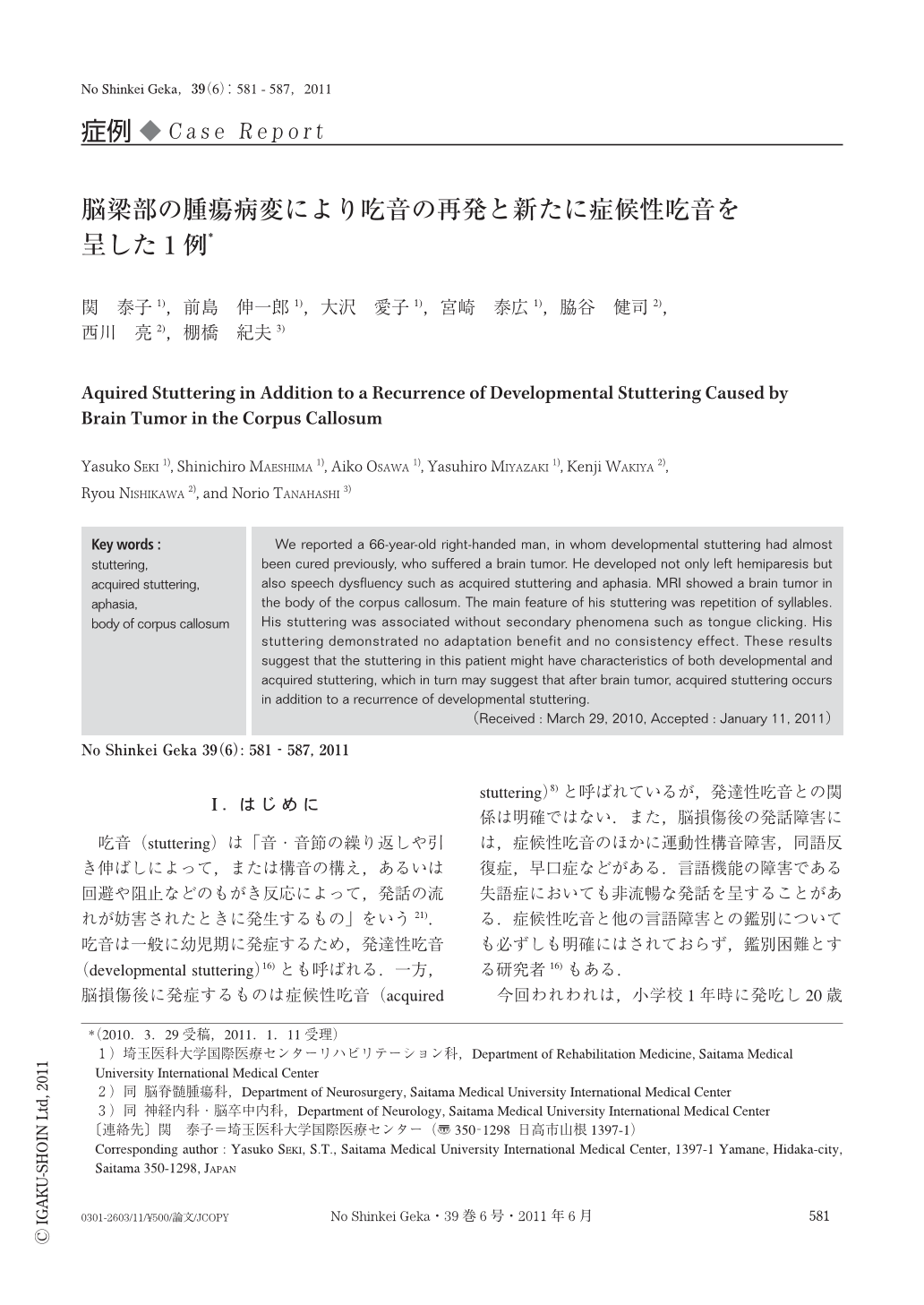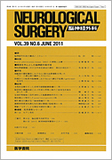Japanese
English
- 有料閲覧
- Abstract 文献概要
- 1ページ目 Look Inside
- 参考文献 Reference
Ⅰ.はじめに
吃音(stuttering)は「音・音節の繰り返しや引き伸ばしによって,または構音の構え,あるいは回避や阻止などのもがき反応によって,発話の流れが妨害されたときに発生するもの」をいう21).吃音は一般に幼児期に発症するため,発達性吃音(developmental stuttering)16)とも呼ばれる.一方,脳損傷後に発症するものは症候性吃音(acquired stuttering)8)と呼ばれているが,発達性吃音との関係は明確ではない.また,脳損傷後の発話障害には,症候性吃音のほかに運動性構音障害,同語反復症,早口症などがある.言語機能の障害である失語症においても非流暢な発話を呈することがある.症候性吃音と他の言語障害との鑑別についても必ずしも明確にはされておらず,鑑別困難とする研究者16)もある.
今回われわれは,小学校1年時に発吃し20歳頃までに軽快するが,脳腫瘍の発症とともに再び吃症状を呈した症例を経験したので報告する.
We reported a 66-year-old right-handed man,in whom developmental stuttering had almost been cured previously,who suffered a brain tumor. He developed not only left hemiparesis but also speech dysfluency such as acquired stuttering and aphasia. MRI showed a brain tumor in the body of the corpus callosum. The main feature of his stuttering was repetition of syllables. His stuttering was associated without secondary phenomena such as tongue clicking. His stuttering demonstrated no adaptation benefit and no consistency effect. These results suggest that the stuttering in this patient might have characteristics of both developmental and acquired stuttering,which in turn may suggest that after brain tumor,acquired stuttering occurs in addition to a recurrence of developmental stuttering.

Copyright © 2011, Igaku-Shoin Ltd. All rights reserved.


